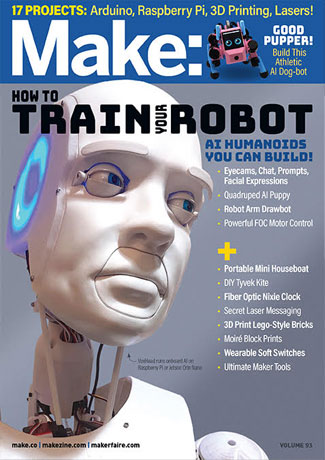

On January 12, 2010, at 4:53pm local time, a 7.0 magnitude earthquake struck Haiti, about 15 miles southwest of Port-au-Prince. The earthquake lasted less than 30 seconds. About 220,000 people were reportedly killed. Near the epicenter 80–90% of buildings were destroyed or critically damaged including hospitals, the airport, seaport, and telecoms services. The devastation was hard to imagine. Financial aid poured in from around the world. And yet, three years later little had substantially changed. Why?
Is it possible that the “top down” approach of aiding underprivileged or severely damaged communities doesn’t work?
Poor are getting poorer
In so-called developed or “First World” countries there are robust centralized systems that provide for our infrastructure needs, including things like food, shelter, water, power, communications, and transportation. If you want light or heat you can simply push a button or throw a switch. Turn on a faucet for potable water. Pop down to the supermarket for fresh food. You get the picture.
And while the trend line toward urbanization for the world’s 8.2 billion people continues to rise, currently some 45% of the world’s population lives in rural areas, many without the benefits of those First World amenities — and with little hope or expectation that those will ever appear. Particularly in South Asia and Sub-Saharan Africa where 75% of the population lives in rural areas and the poverty rates continue to rise. No matter how you run the numbers, we’re talking upwards of 3 billion people in need.
Research provides evidence that the last 50 years of this “top-down” approach of sending financial aid to impoverished countries or communities have actually had little impact.1 This is due largely to a combination of corruption, cultural misunderstanding, and weak or insufficient distribution networks.

Can we MacGyver it?
So, what’s to be done? Should we ignore the plight of damaged or impoverished communities and instead be grateful for the privileges we enjoy? Or might there be a different and potentially more effective approach to assist such communities? Perhaps a “bottom up” approach? What would that look like and how would it work?
Suppose for a moment that multi-purpose, low-cost, and low-tech elements could be packaged in a small shipping container along with simple instructions — key elements that might ensure or enhance a village’s survival or recovery in the face of increasing natural disasters. What if we called such a package “MacGyver in a Box”?
What might those key elements provide? Obviously the needs and implementation will differ from place to place but certainly some of them could be:
- Electricity and light
- Communication and transportation
- Water purification
- Refrigeration and cooking
- Heating and cooling
- Medical supplies

In short, everything a village might need to get started or start again, in developing communities or disaster impacted areas. It’s encouraging to note that these small systems and technologies largely exist. A quick Google or YouTube search of “homemade water purification” or “homemade power generation” will provide hundreds of hits. But what if there were less costly and more effective ways to provide such things to impoverished communities or disaster sites — kits just waiting to be collated, assembled, and transported to places of need? Who would put these kits together, and how would they be vetted to ensure they were effective? And what if these could be provided directly between individuals and communities rather than through governments?
Help meet the challenge
To be sure, even poor communities have proven themselves masters of surviving. But there are projections from well-respected think tanks that over the next few years or decades somewhere between 200 million to 1.2 billion people will be displaced by extreme weather events, climate shifts, and the political disruptions caused by these changes. Shouldn’t we start thinking about how we could cheaply and easily provide aid and relief with a “bottom up” approach to confront such a likely challenge?
The “bottom up” approach requires that you ask local communities what they need instead of assuming or deciding that for them. There’s no point sending items they don’t want, or impressive technology that breaks down and can’t be repaired without unavailable parts. And how do we avoid the entanglements of politics, border security, and customs?
Could this be done by the collective efforts of, say, Make: community enthusiasts, engineers, students, and interested individuals, with or without the support of established nonprofits or non-government organizations (NGOs)? We know the materials already exist, indeed many of them are routinely thrown away in developed countries when more efficient technologies hit the market.

Clearly international partnerships would be critical, perhaps through university engineering students, or existing relief organizations, or individuals who have such connections. As an initial effort in fall 2024, Duke University piloted one element that might be in the box: accessible refrigeration. Freshman students designed and prototyped low-cost refrigeration systems. It’s a start. But what more can we do?




We’ve raised more questions than answers. But the more important question we’d leave with you is: Why not use our collective wisdom to create such an approach and come up with answers to these questions? Isn’t it morally and logistically incumbent upon all of us who have so many privileges to at least try?
We’re hoping at least some of you in the Make: community might be open to pitching in. After all, isn’t that what MacGyver would do?
This article appeared in Make: Vol 93. Subscribe for more maker projects and articles!
Featured photo by Adobe Stock-Lucky Future. All other photography by the MacGyver Foundation.
- The Fortune at the Bottom of the Pyramid by C.K. Prahalad (2008), White Man’s Burden by William Easterly (2007) ↩︎
ADVERTISEMENT








